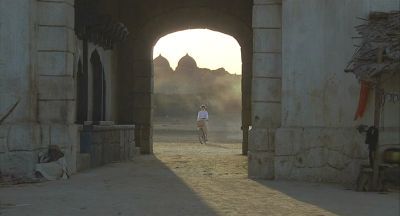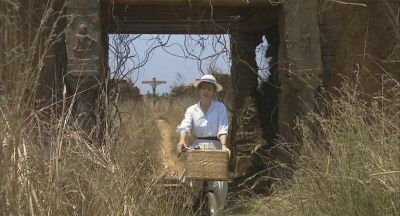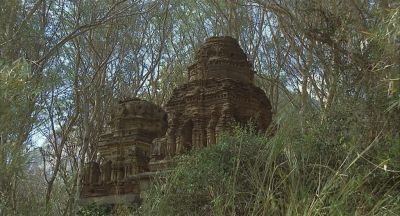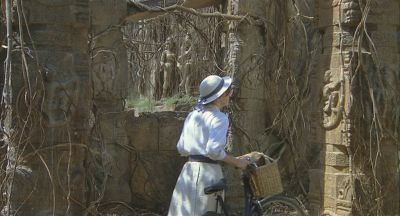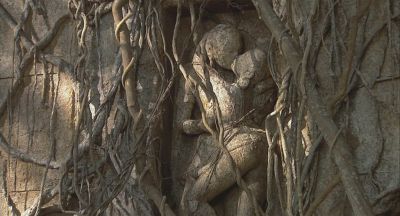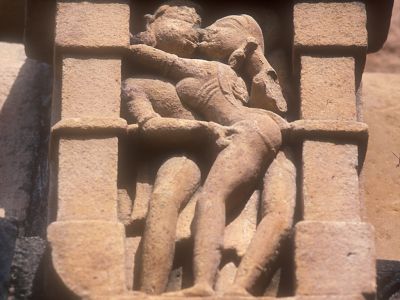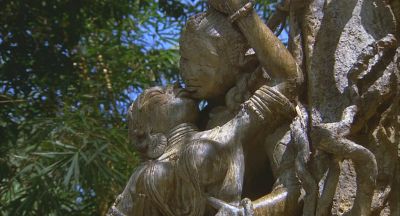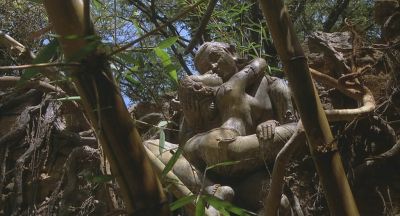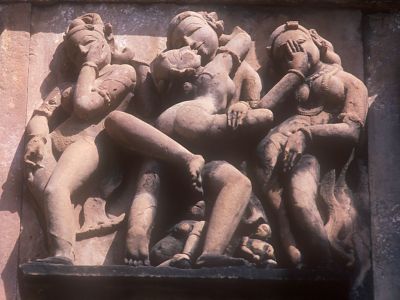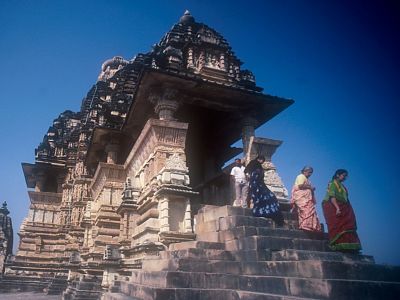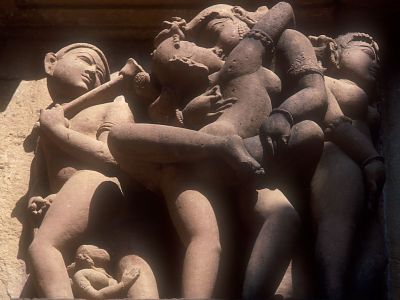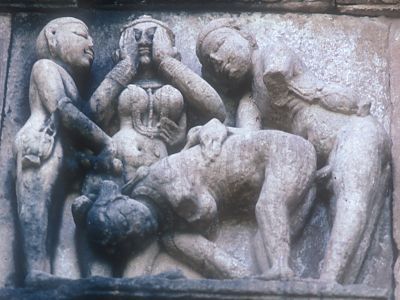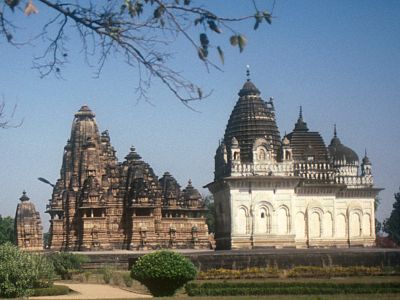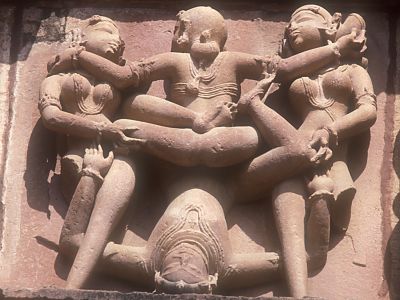The Temples of Khajuraho
David Lean would raise eyebrows in a number of ways when he included in his script a scene that doesn't appear at all in the original book: the scene where Adela, on a cycling trip, discovers some abandoned temples with graphic carvings.
As Kevin Brownlow writes in his wonderful book 'David Lean - a Biography', David largely abandoned Forster's plain, intelligent and well-meaning girl. "I added the scene of Adela bicycling through the fields and finding the ancient Indian erotic statues in the ruins of a temple. I used that scene to show her as-yet-untapped se^^xuality. I always imagined to myself - although nobody ever said so, Forster certainly didn't - that she was brought up in some vicarage somewhere and both parents died. She was a very repressed girl. I wanted to say she was opening out. One of my favourite places in India is a place called Khajuraho. A couple of Englishmen were hunting tigers there and found themselves in the forest with a lot of undergrowth. They saw stone figures amidst the vines and soon discovered that they were erotic figures. [1839] In fact, there were more than sixteen temples covered with this er^^otic statuary. I've always been fascinated by that, and it gave me the idea of showing Adela in a new light. Also, I enjoyed doing that scene - I think its a piece of cinema." (David Lean to Denise Worrell p.153)'
Santha Rama Rau, who wrote the play that Lean used as a basis for the script was dismayed and distressed with Lean's addition to the story. In hindsight, she thought it was just as well that David hadn't confided in her. "I think I would have had a fit if I had known in advance that the film was going to contain the sequence of a lonely 'brave' Memsahib cycling about the Indian countryside and coming upon er^^otic sculptures in the jungle only to be scared into flight by a pack of shrieking monkeys. This sort of vulgarity was so remote from Forster's oblique, equivocal approach to Adela's se^^xual malaise that I'm sure I would have argued furiously against it if I'd been given the opportunity."
Sandy Lean was later to say in a fax to Kevin Brownlow: "David adored the classics, but he had no reverence when it came to adapting them into his own medium. What he had instead was a kind of fearless innocence. He'd say, 'Look here, this bit about the British, he's simply got it wrong.' After all, what made Forster an expert? And then, being David, he tried to fix it. Well, you don't fix Forster any more than you fix the Taj Mahal. You love him or leave him, but you don't fix him."
Although the carvings were obviously made for the film, the basis for those carvings can still be seen today at the very popular site of Khajuraho, in northen Madhya Pradesh. Set miles from the nearest town, in open forested and cultivated landscape, it is listed as a World Heritage Site. Khajuraho's temples were built under late Chandela kings between 950 and 1050 AD. Each temple is dedicated to a different deity. The Chandelas were followers of the Tantric cult which believes that gratifications of earthly desires is a step towards attaining the ultimate liberation or moksha. The sculptures are remarkable and show great sensitivity and warmth, and reflect society in an age free from inhibitions. They express the celebration of all human activity, displaying one aspect of the nature of Hinduism itself, a genuine love of life.
This actual carving, below, at a temple at Khajuraho, is remarkably similar to the one above created for the film, though the hand has been re-positioned, maybe to please the censor.
This actual carving, below, is again remarkably similar to the one above created specially for the film.
Such graphic scenes would not be suitable for a family-film !

